TruthScan vs. 10 AI-Generated Images & 6 Real Images
10 AI images, 6 real ones — and TruthScan proved why being aggressive against fakes might be the safer bet.
John Angelo Yap
Updated August 28, 2025
A detective trying to figure out which is robot and human, generated with GPT-4
Reading Time: 4 minutes
The internet in 2025 is a strange place. Some days, it feels like everything you see online could be AI-made. Other days you’re convinced you can tell the difference — until someone shows you a “photo” that was never real in the first place.
This is why AI image detectors matter more than ever. It’s no longer just about flagging obvious fakes anymore; it’s about dealing with images that look believable enough to fool you. And one of the detectors making waves right now is TruthScan.
We’ve tested it against models like DALL-E, GPT-4o, and Midjourney. But today, we’re doing something a little different: stacking 10 AI-generated images against 6 real images to see how well TruthScan can separate fact from fiction.
What is TruthScan?
TruthScan is an AI-powered image detection tool built to analyze whether a picture was generated by AI or captured in reality. Unlike basic detectors that rely on metadata or resolution quirks, TruthScan digs deeper — looking at pixel patterns, textures, and inconsistencies in how AI models “imagine” details.
That means it can spot the subtle giveaways: a hand with too many knuckles, skin textures that look slightly airbrushed, or even physics that don’t quite make sense in the background.
It’s not perfect — no detector is — but compared to a lot of what’s out there, TruthScan has proven to be consistently accurate across different generators.
The Test Setup
Here’s how the testing will go:
- 10 AI-generated images from Midjourney.
- 6 real-world images taken from Freepik, a stock photography site.
This mix makes the test more practical. The goal: answer the simple but crucial question — is this actually real or did an AI somewhere generate it?
TruthScan vs. 10 AI-Generated Images
Test #1
Truthscan: Correctly classified image as AI-generated.
AI Likelihood Score: 98%
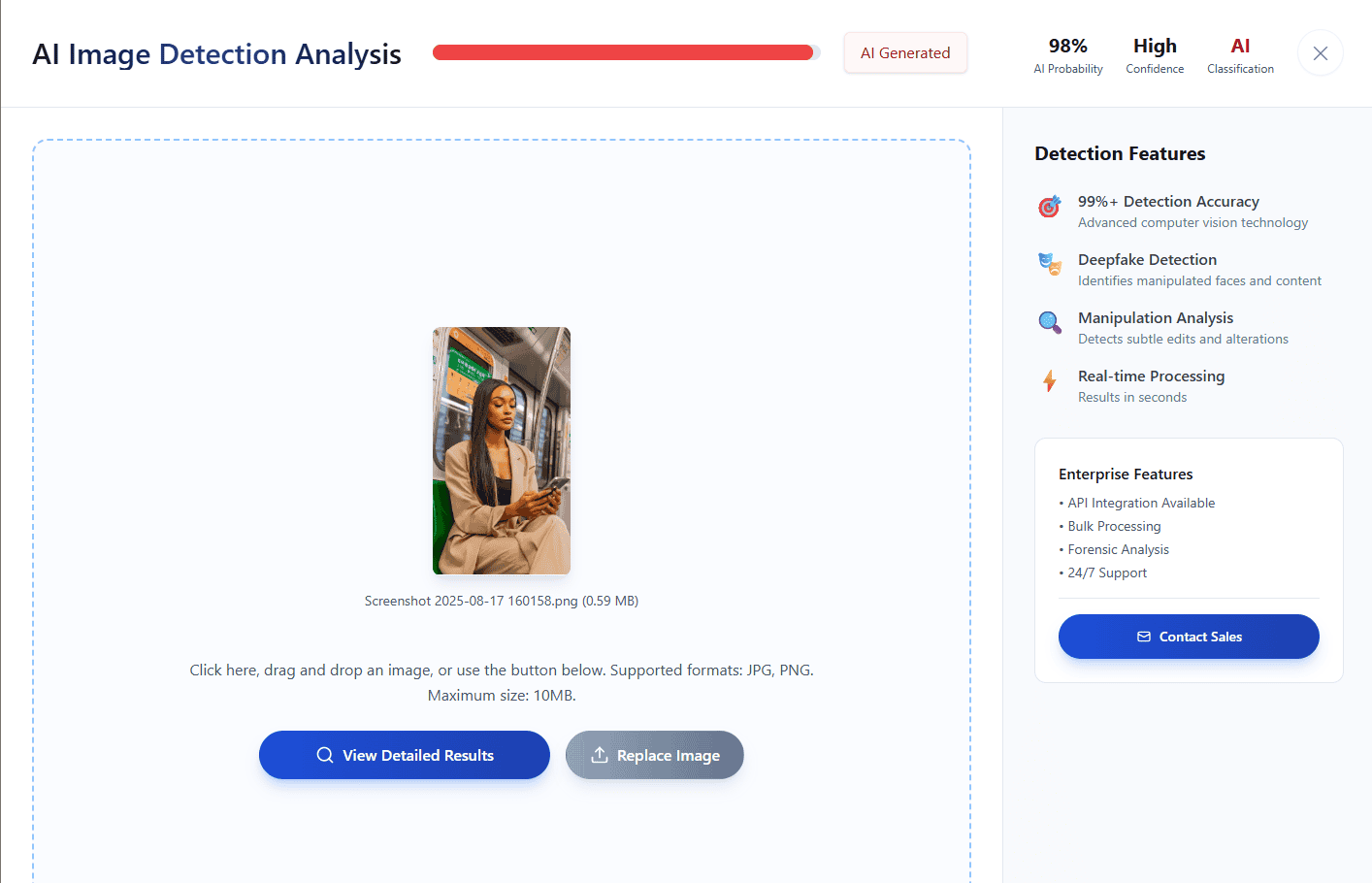
Test #2
Truthscan: Correctly classified image as AI-generated.
AI Likelihood Score: 98%
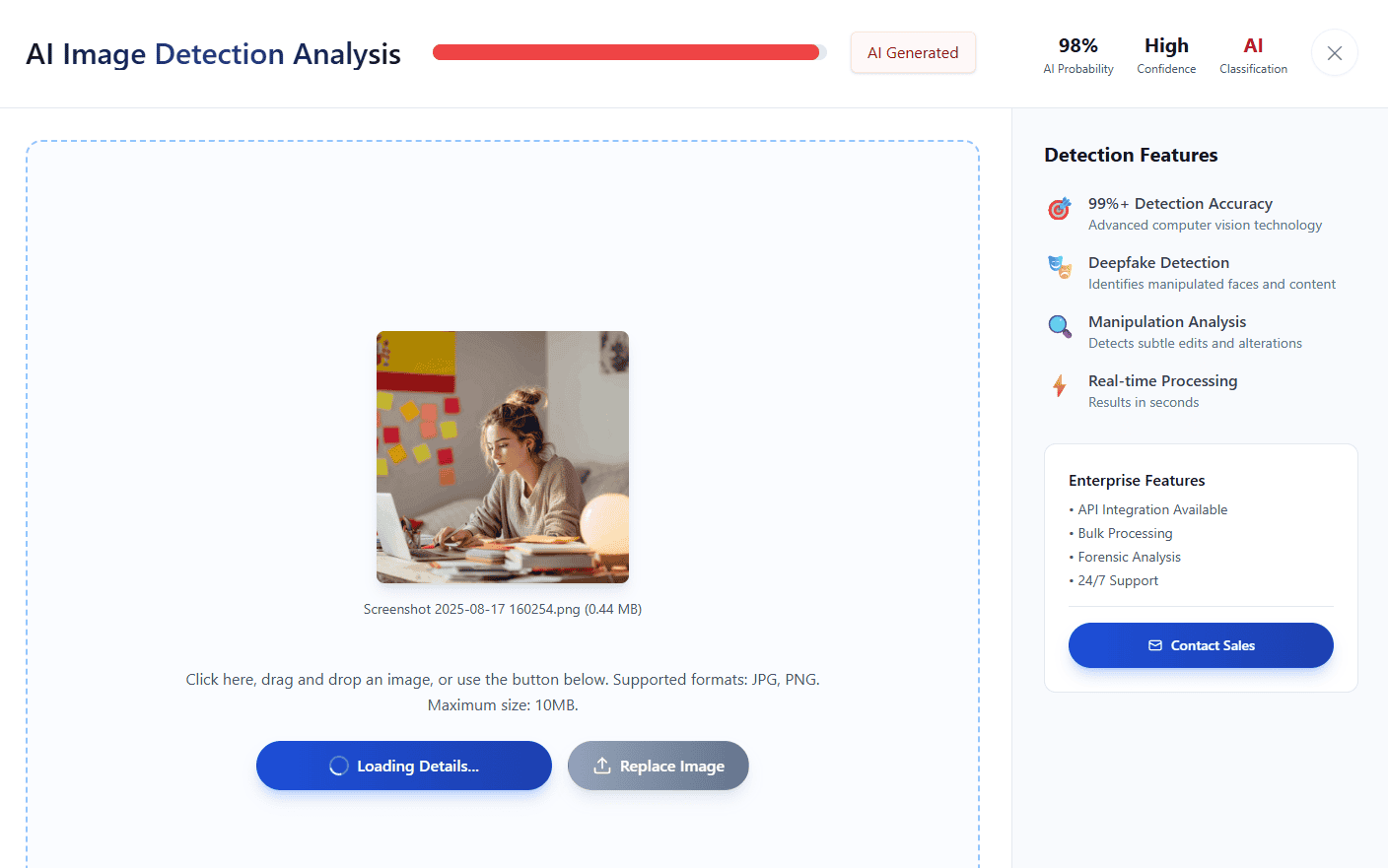
Test #3
Truthscan: Correctly classified image as AI-generated.
AI Likelihood Score: 98%
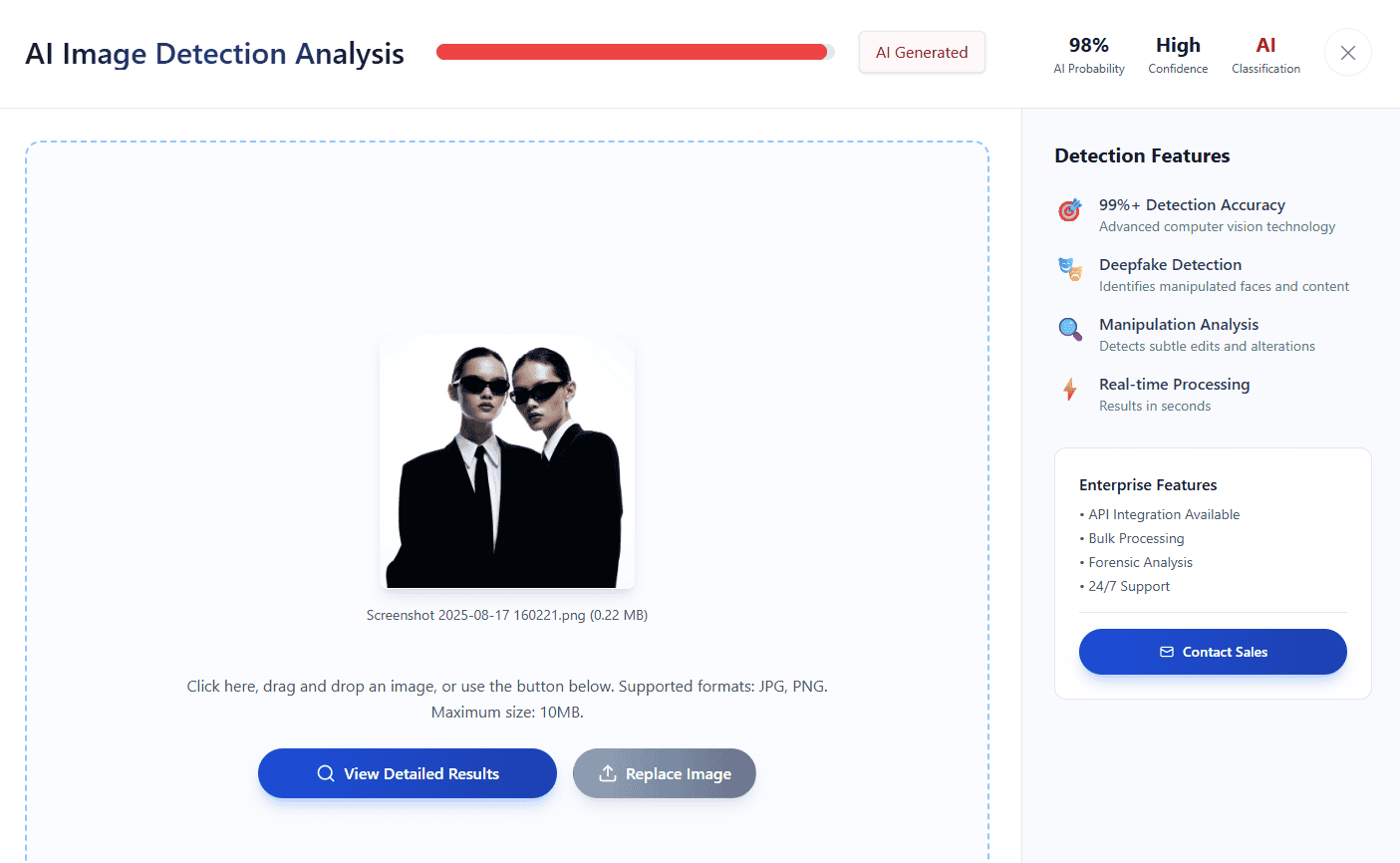
Test #4
Truthscan: Correctly classified image as AI-generated.
AI Likelihood Score: 98%
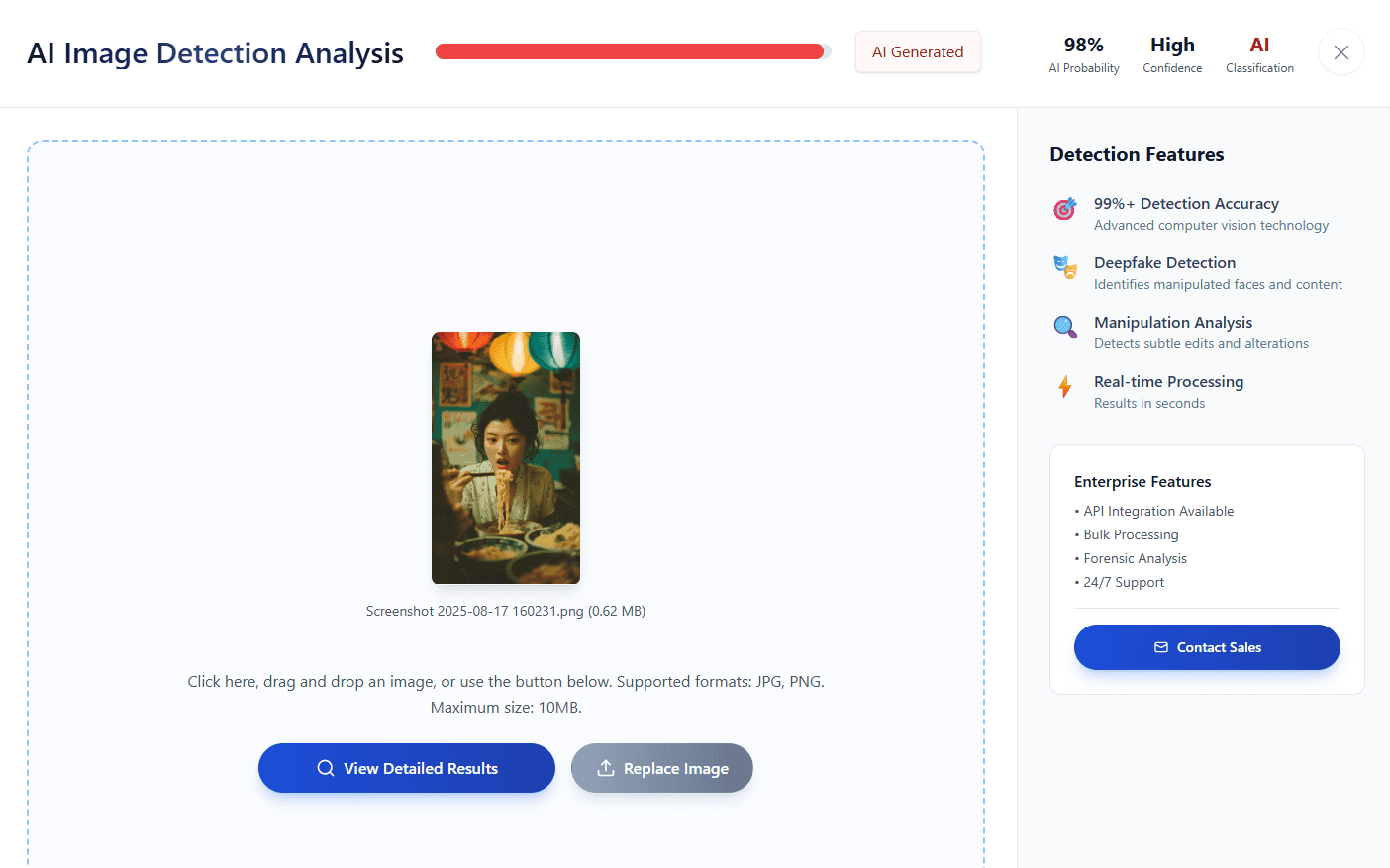
Test #5
Truthscan: Correctly classified image as AI-generated.
AI Likelihood Score: 98%
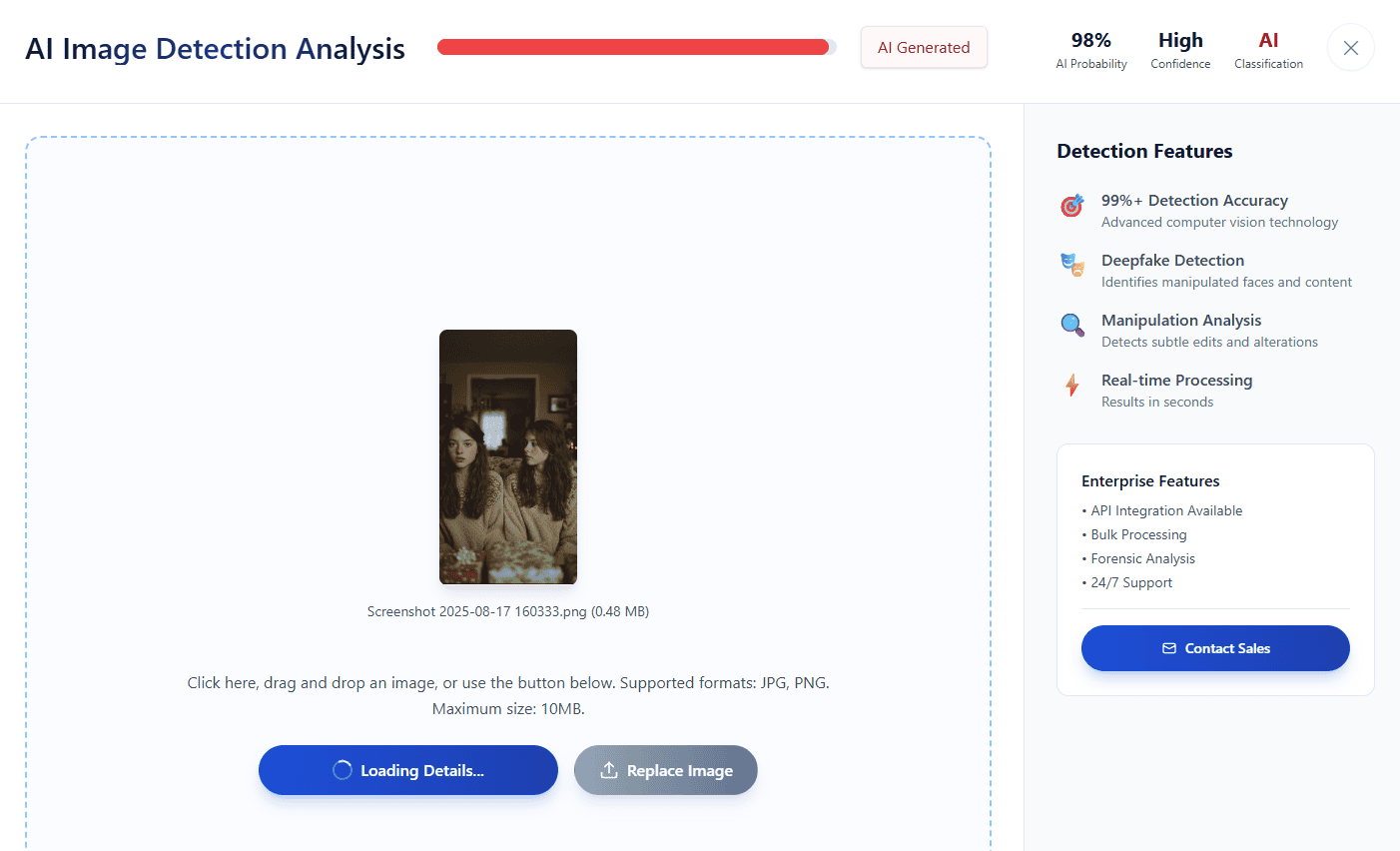
Test #6
Truthscan: Correctly classified image as AI-generated.
AI Likelihood Score: 98%
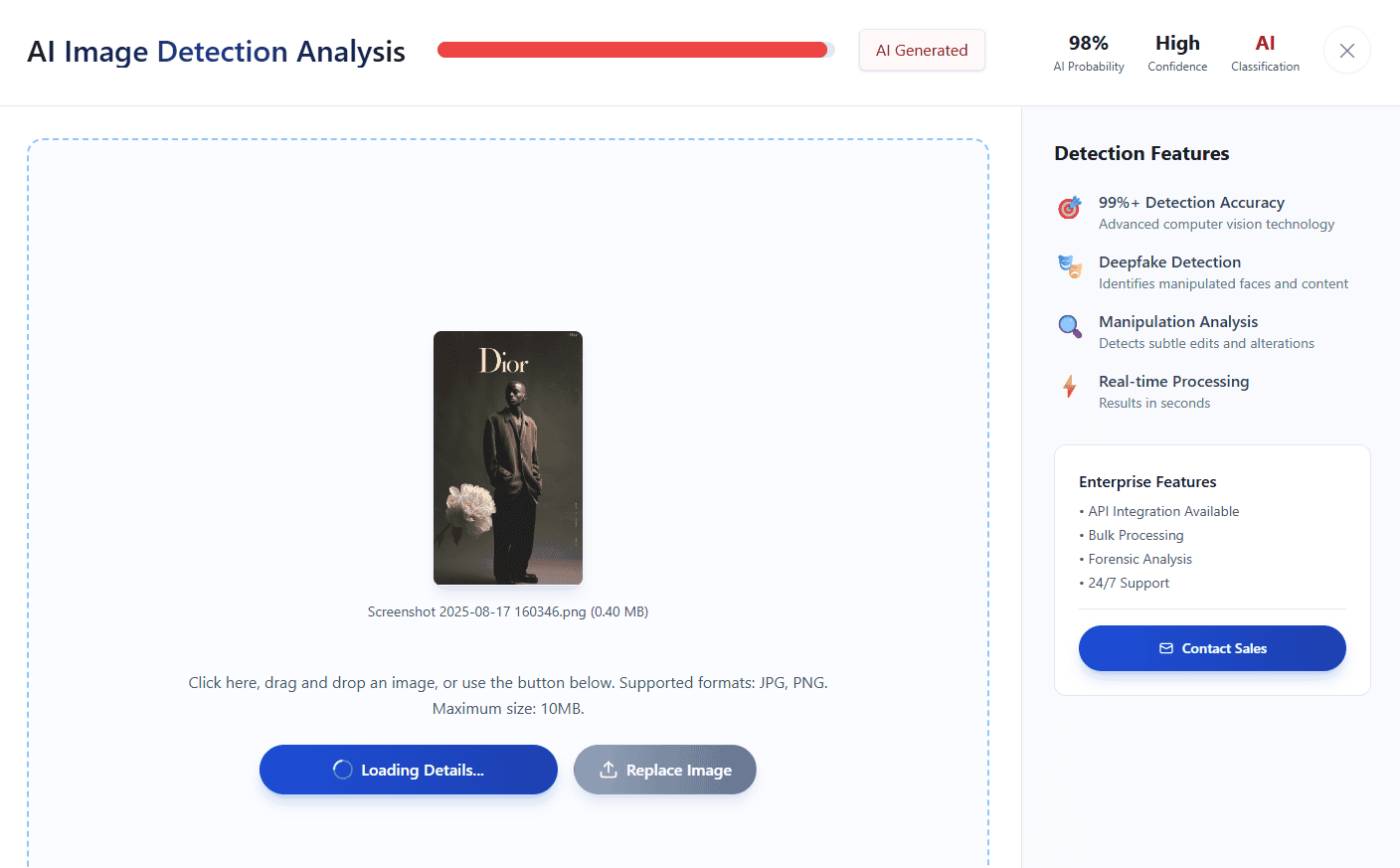
Test #7
Truthscan: Correctly classified image as AI-generated.
AI Likelihood Score: 97%
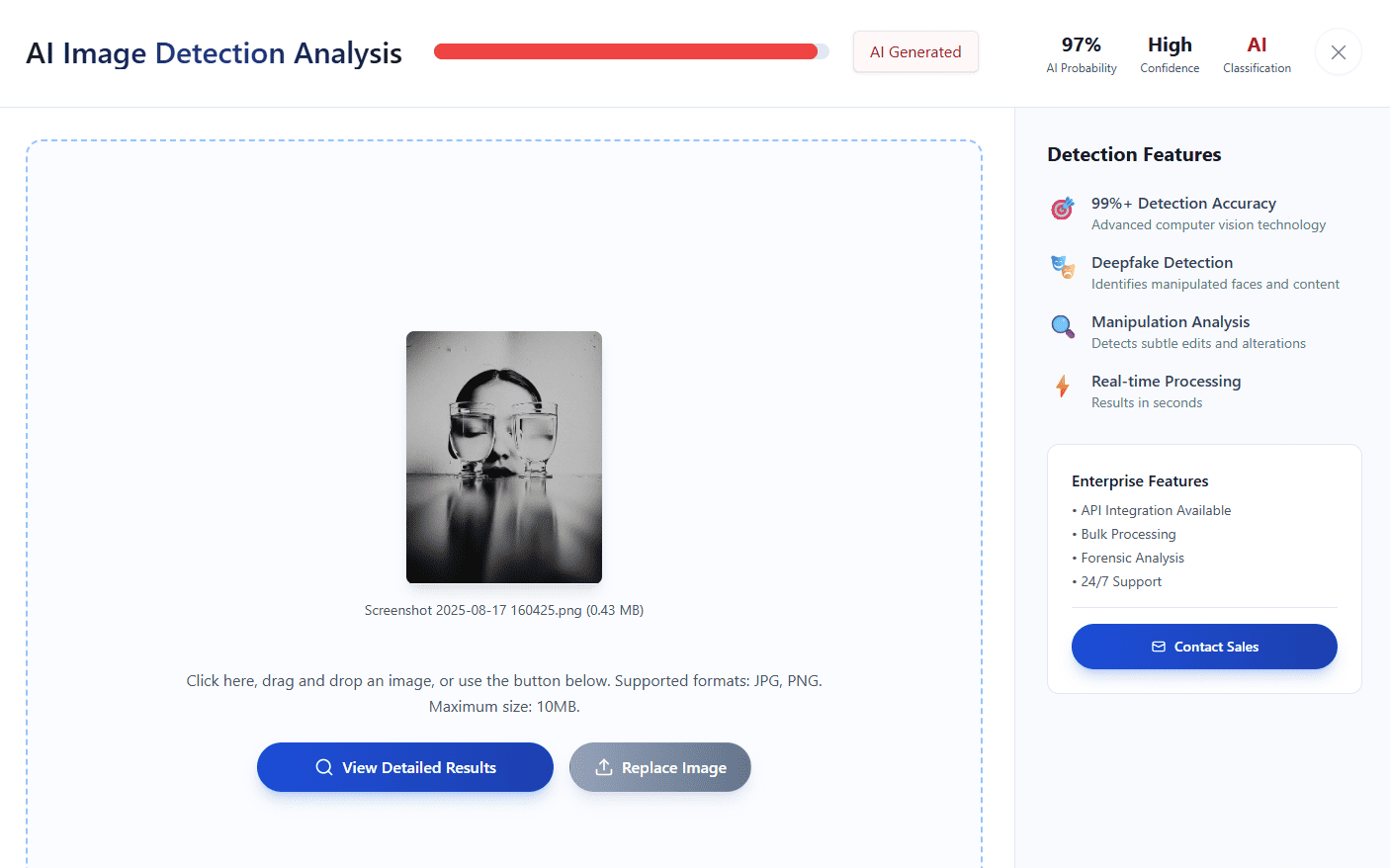
Test #8
Truthscan: Correctly classified image as AI-generated.
AI Likelihood Score: 97%

Test #9
Truthscan: Correctly classified image as AI-generated.
AI Likelihood Score: 93%
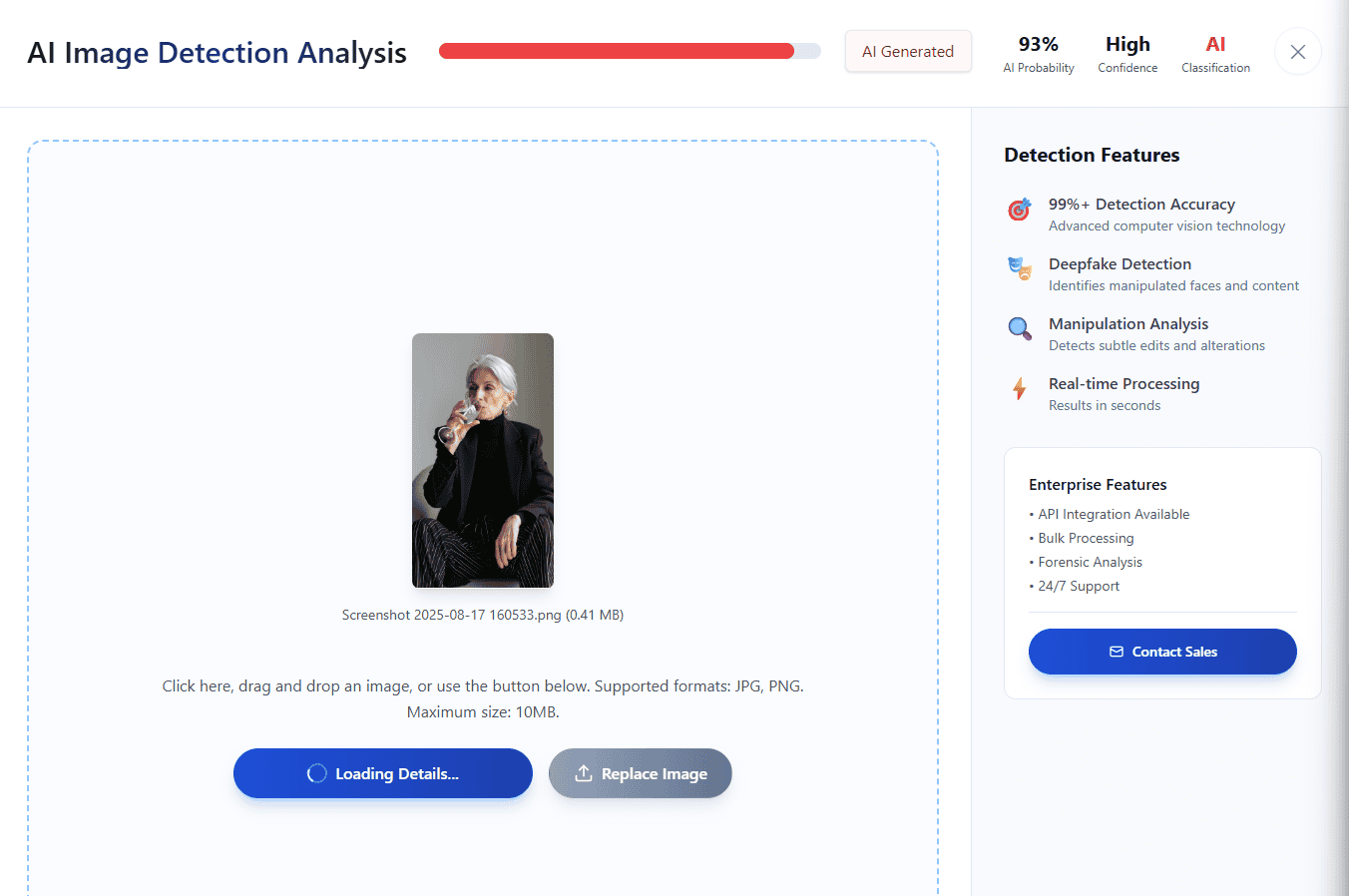
Test #10
Truthscan: Correctly classified image as AI-generated.
AI Likelihood Score: 91%

TruthScan vs. 6 Real Images
Test #1
Truthscan: Correctly classified image as real.
AI Likelihood Score: 5%
Correctness: 95%
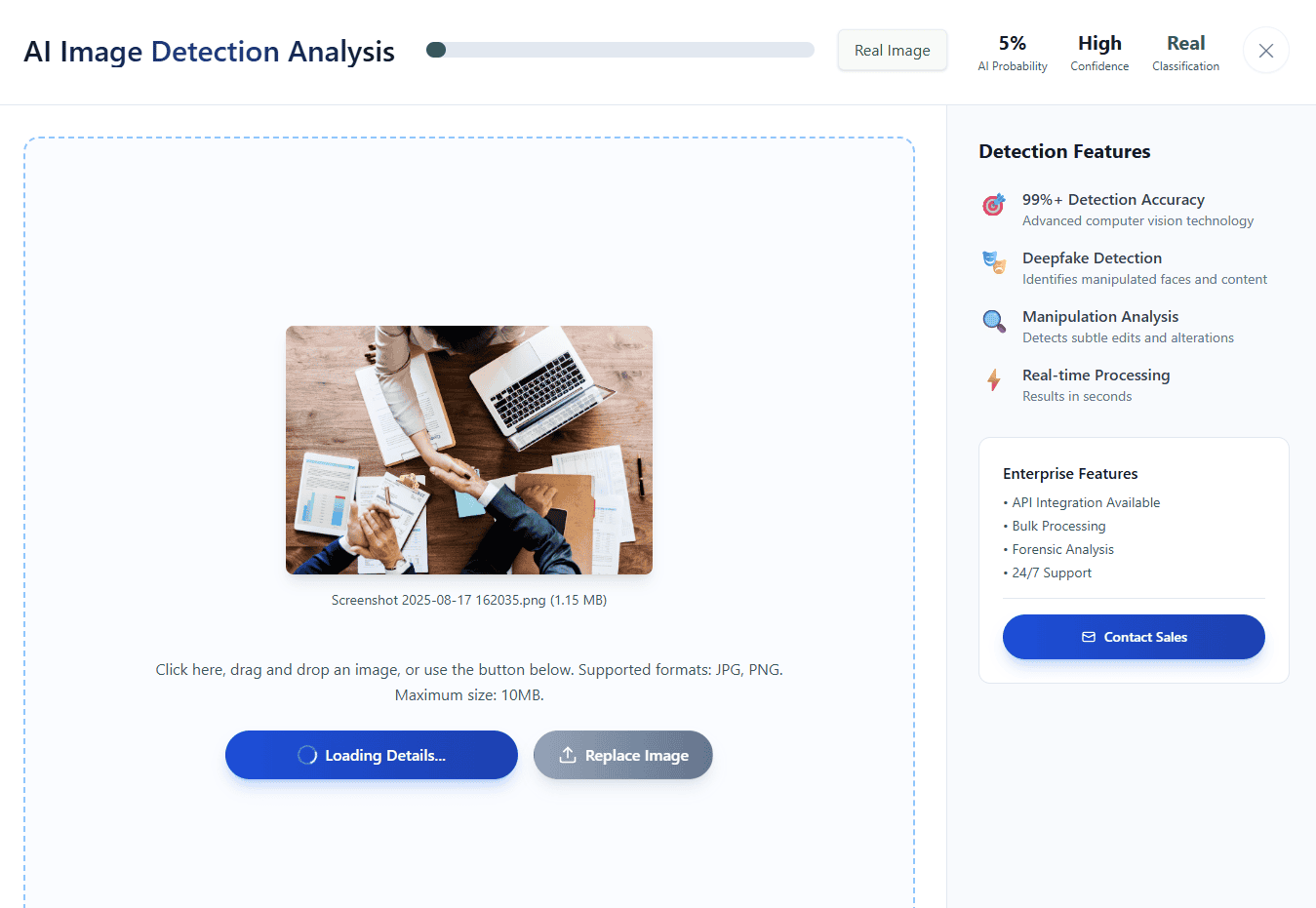
Test #2
Truthscan: Correctly classified image as real.
AI Likelihood Score: 4%
Correctness: 96%

Test #3
Truthscan: Correctly classified image as real.
AI Likelihood Score: 6%
Correctness: 94%

Test #4
Truthscan: Correctly classified image as real.
AI Likelihood Score: 3%
Correctness: 97%

Test #5
Truthscan: Correctly classified image as real.
AI Likelihood Score: 3%
Correctness: 97%

Test #6
Truthscan: Correctly classified image as real.
AI Likelihood Score: 2%
Correctness: 98%
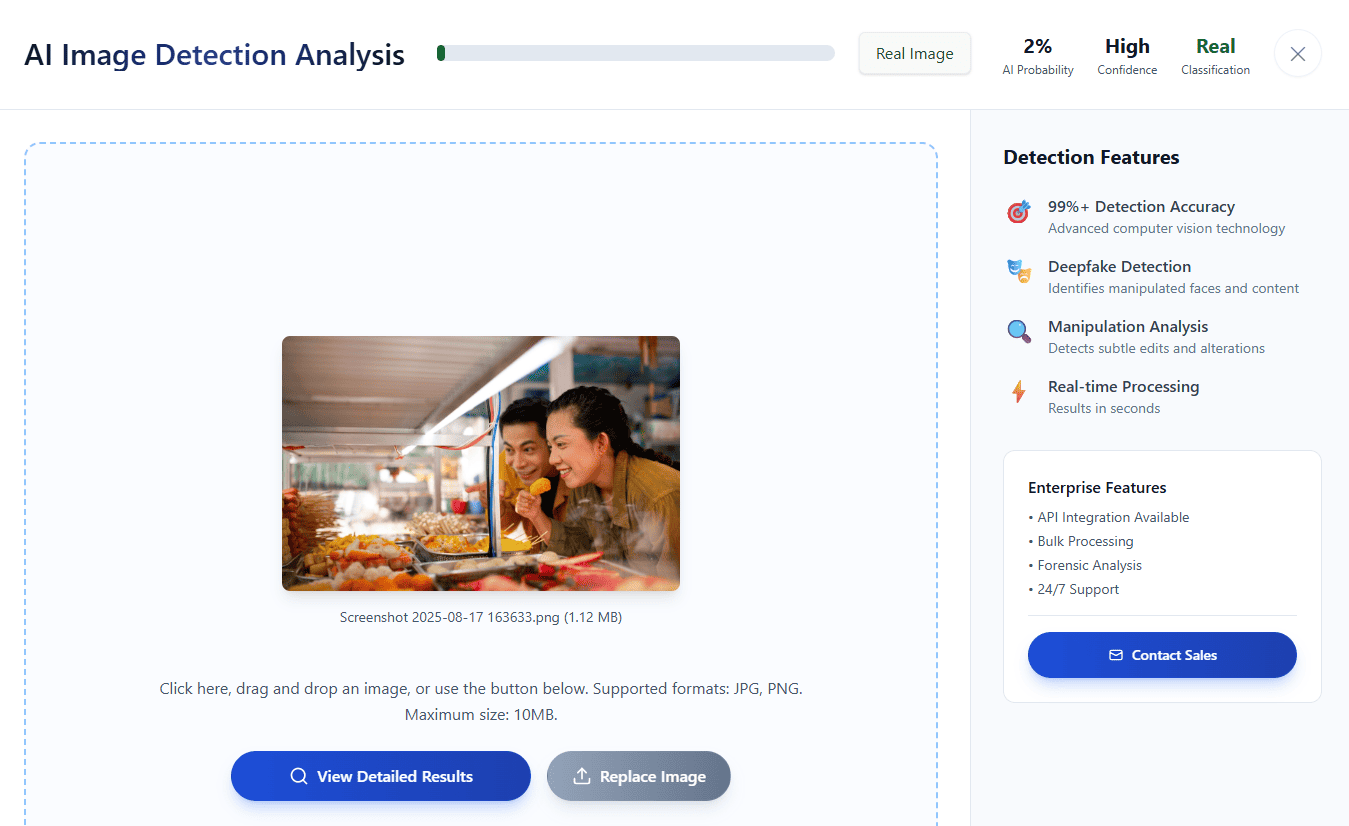
Test Results
AI-Generated Images
Test Number | Truthscan vs. AI |
#1 | 98% |
#2 | 98% |
#3 | 98% |
#4 | 98% |
#5 | 98% |
#6 | 98% |
#7 | 97% |
#8 | 97% |
#9 | 93% |
#10 | 91% |
Score | 96.6% |
Real Images
Test Number | Truthscan vs. Real Images |
#1 | 95% |
#2 | 96% |
#3 | 94% |
#4 | 97% |
#5 | 97% |
#6 | 98% |
Score | 96.16% |
The Bottom Line
When put up against 10 AI-generated images and 6 real ones, TruthScan pulled off an impressive feat. Against AI content, it scored a 96.6% correctness rate — nearly flawless. It consistently flagged synthetic images with accuracy that most other detectors can’t match.
Where things got trickier was with the real photos. TruthScan came in at 96.16% correctness there, sometimes mislabeling authentic images as AI.
On paper, that might look like a flaw, but in practice it shows just how aggressively the system is tuned to catch even the most subtle signs of AI generation. In other words, it errs on the side of caution — which isn’t always a bad thing if your priority is protecting yourself from fakes.
Here’s the key takeaway: TruthScan absolutely dominates when it comes to spotting AI imagery. It’s better to deal with a few false alarms on real photos than to let AI-generated images slip through undetected. In a world where convincing fakes are multiplying daily, that’s the tradeoff you actually want.
So yes, TruthScan isn’t perfect. But it doesn’t need to be. What it offers is something more important: confidence that if you’re worried about AI-generated visuals, it’s going to catch them. And that’s why, despite the harsher treatment of real images, TruthScan still earns a strong recommendation.
It’s not just another detector — it’s one of the few you can genuinely count on to keep AI images in check.
Want to Learn Even More?
If you enjoyed this article, subscribe to our free newsletter where we share tips & tricks on how to use tech & AI to grow and optimize your business, career, and life.